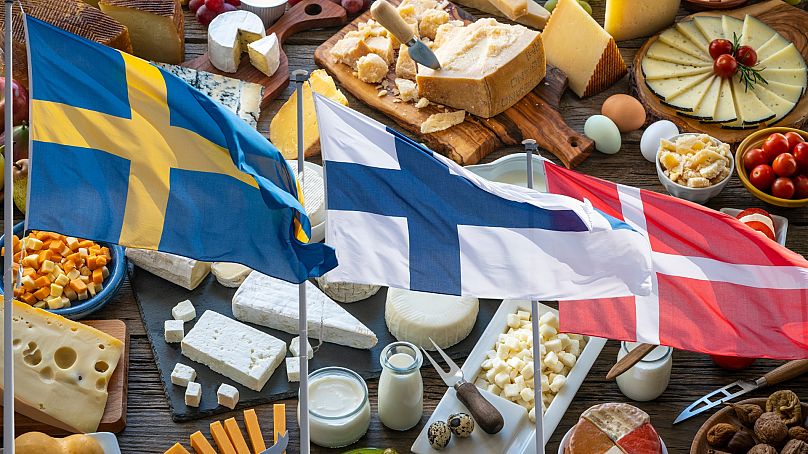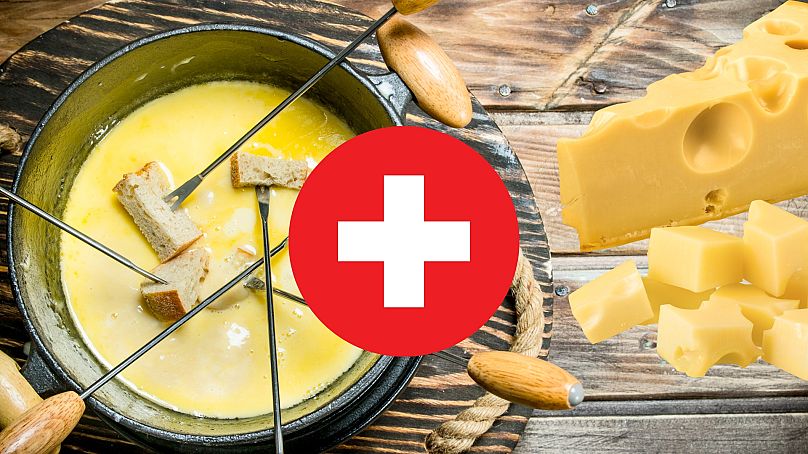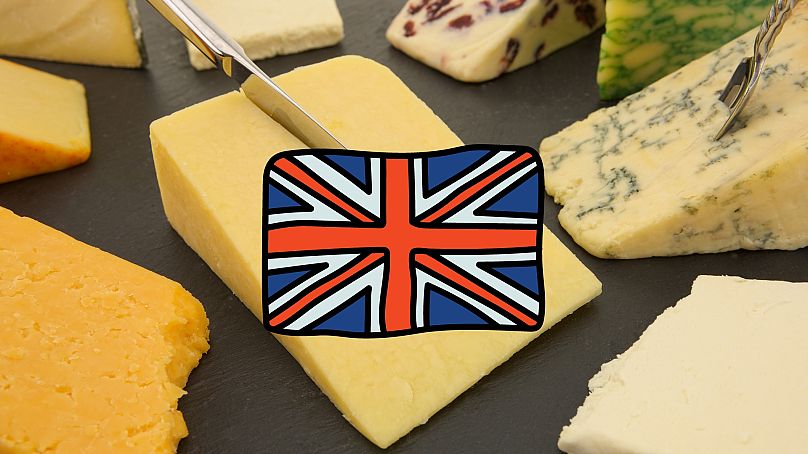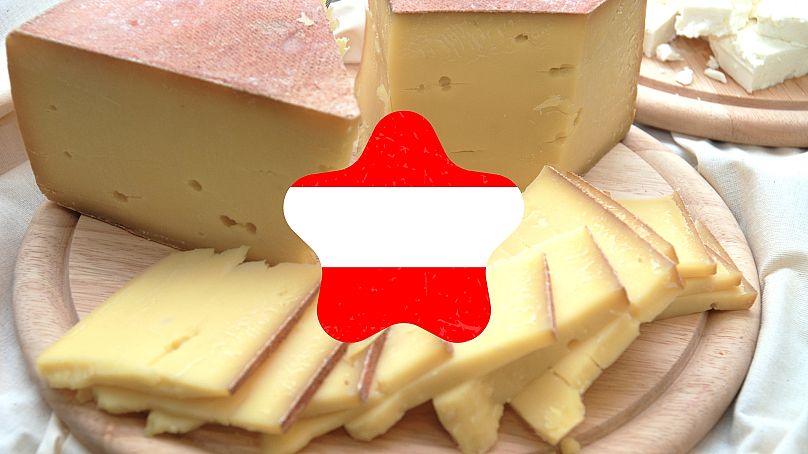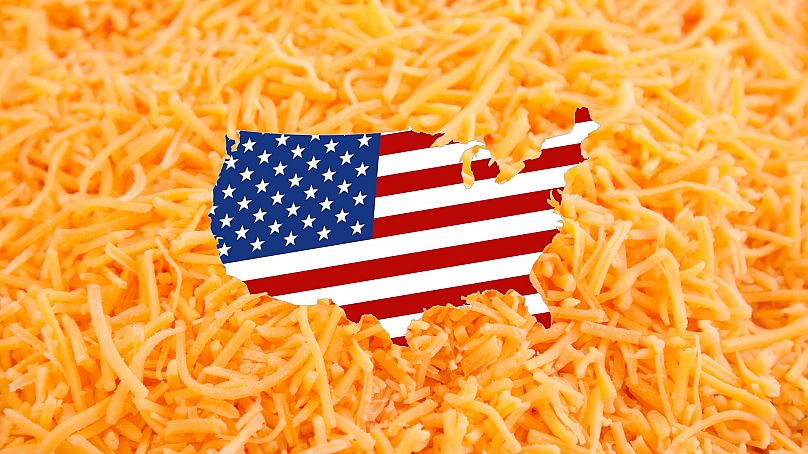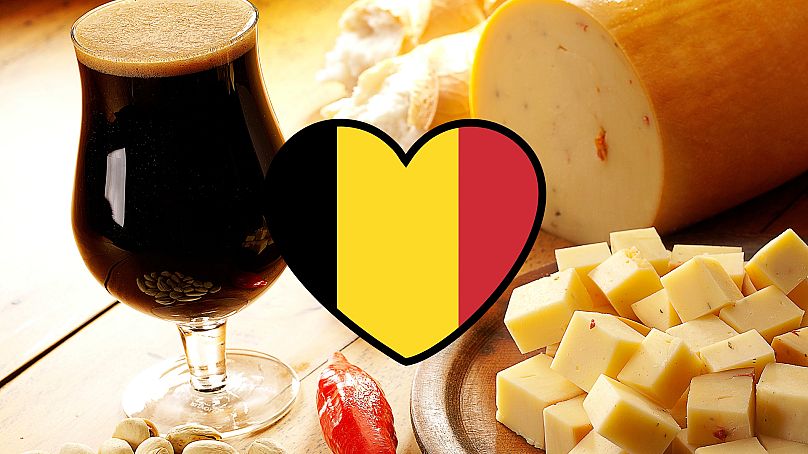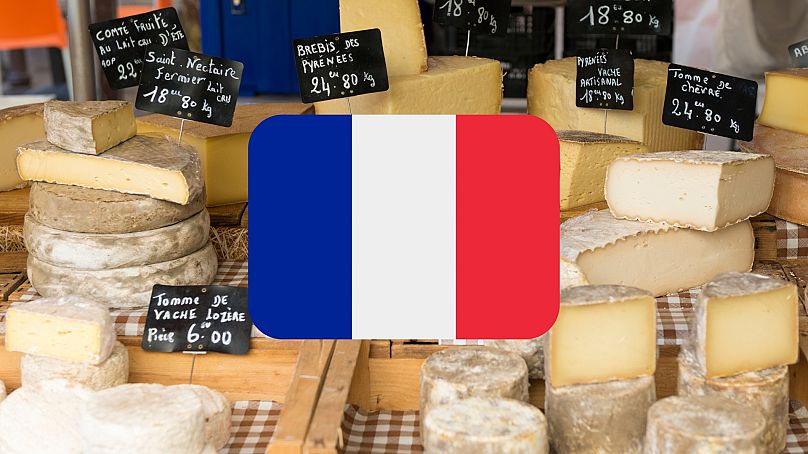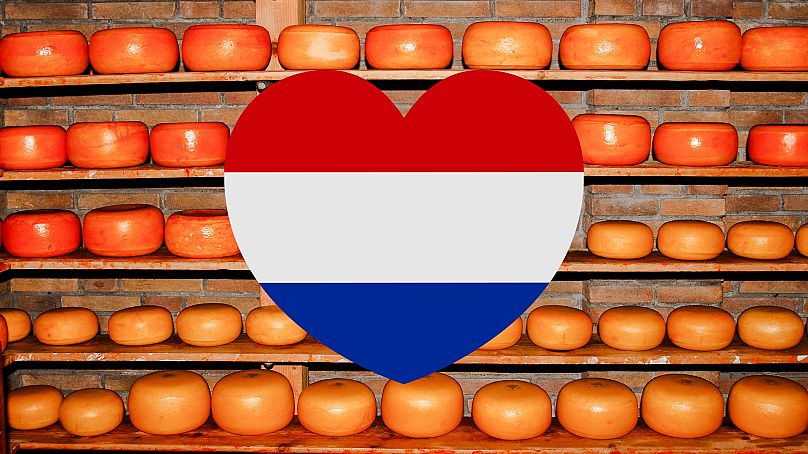A new industry report says that 9 out of 10 nations that produce, consume and think about cheese the most are in Europe. Find out which country is the cheesiest.
There are few things that can be agreed upon by most people around the world. One of them is probably the fact that cheese is delicious.
It’s creamy and packed with umami, adding instant flavour to any dish. We sprinkle it on pizza and pasta, wedge it into sandwiches, melt it on top of potatoes and lasagna. There’s even an entire aesthetic dedicated to the art of the perfect cheese board.
But surely some nations must love cheese more than others, right? And how on this good green earth do you measure such affection? These pressing question have finally been answered by the curious people at market research agency Mintel.
Their new report looking at the world’s “Cheesiest Nations” ranks each country based on their cheese imports, cheese production and Google searches for “cheese” in their native language.
The results are un-brie-lievably gouda for Europe (please forgive me), which nabbed nine of the top 10 spots.
You’d feta believe we’ve got the lowdown on the definitive ranking of World’s Cheesiest Nations, according to Mintel.
8-10 Scandinavia spends some serious cheddar on imported cheese
While the Nordic nations aren’t necessarily the first you’d think about when it comes to cheese, Finland, Denmark and Sweden are surprisingly committed to the product.
Finland came in 10th place on Mintel’s list. Despite only producing six cheeses itself, the country spends an astonishing $5.64 per person on imported cheese every year – more than Sweden and Denmark.
The Finns dropped in the rankings, though, because they weren’t searching for cheese online as much as their neighbours. Finland’s cheese-related monthly Google searches were around a third fewer than Denmark, which came in 9th place. Denmark also produces more cheeses than Finland, with 16.
Sweden came in 8th place because its cheese production outweighs that of its neighbours – the home of meatballs makes 25 of its own cheeses and consumes about the same as both Finland and Denmark.
7 - Switzerland is particularly fond(ue) of cheese
A small but mighty cheese nation, Switzerland is the birthplace of fondue, the rich and melty winter delight that will warm your heart as you reach for your Lactaid. It’s also known around the world for “Swiss cheese,” or Emmental, the hole-filled hard cheese that grates and melts like a dream.
But despite producing 32 different varieties of its own, Switzerland is also a major importer of foreign cheeses. It ranks third-highest in the world for trade value per capita, falling just behind the Netherlands and Belgium.
6 - More like “Grate” Britain, right?
It’s safe to say the UK has cheese on the brain. Famous for its Cheddar and Stilton varieties, the country googles cheese as much as France does, but with one million fewer people.
The UK produces a whopping 261 different types of native cheese varieties - and consumers seem to prefer their local cheese to imports. Mintel found that 70% of British consumers say they purchase cheddar, with 36% buying regional British cheeses.
Britain’s love for cheese has grown 44% in the last five years, with forecasts predicting UK cheese sales will reach £4.5 billion (€5.2 billion) by 2028.
5 - Austria gets its cheese by the Bergkäse-ful
Austria doesn’t discriminate when it comes to cheese - it consumes huge amounts of both homegrown and foreign varieties. The country spends more than $64 million on importing cheese every year, making it the fourth global importer for trade value per capita. It also produces 41 types of its own local cheese, including bergkäse and alpenkäse, made with raw cow’s milk from the Alps.
4 - The USA’s love for cheese goes beyond Kraft singles
The stereotype of American cheese is the individually-wrapped highly-processed Kraft Single. But the great US of A has much more to offer as a cheese-loving nation. It’s a powerhouse producer, with 523 different cheeses originating in the US.
And while American consumers may not be the most adventurous when it comes to foreign cheese (the majority say they’ve never heard of cheeses like paneer and halloumi), 96% say they eat cheddar.
3 - Belgium is feta off with imported cheese
It’s impressive that Belgium made the list, considering the fact that it only produces 13 cheeses of its own and doesn’t have a huge number of cheese-related Google Searches. Even more impressive, then, that the country of fewer than 12 million came in third place!
Belgium spends an average of $11 (€10) per person each year on imported cheeses, second only to the Netherlands in terms of value per capita. The small country imports more than 1.6 kilos of cheese per person every year – second in the world!
2 - France Camembert coming in second
The French fancy themselves the reigning cheese champions, but they missed the top spot in Mintel’s study by a slight margin for surprising reasons.
Mintel reported that French consumers said that they were eating less cheese in 2024 because they were worried about the impact cheese production has on the environment.
Despite this, France is still a massive cheese country – it’s the biggest importer in the world, spending a total of $374 million (€344 million) on cheese each year. It produces 246 different varieties, including world-renowned staples like brie, roquefort and camembert.
The French also think about cheese more than most, with over 90,000 monthly Google searches for “fromage”.
1 - Edam! The Dutch wear the cheesy crown
The winner of the cheesiest country title is the Netherlands, home to the wildly popular gouda and edam varieties.
The small nation of just 17 million people imports a staggering $14 (€13) worth of cheese (3.1 kilograms) per person each year, making them the biggest cheese buyers of any nation. They also produce 38 varieties that are consumed around the world.
The Dutch are also thinking about cheese more than anyone else in the world – with the most monthly Google searches for “cheese” in native languages per capita.
Well, there you have it, folks, the cheesiest people on the planet. Who are we to disa-brie?
Click here to read Mintel's full report.
Correction: A previous version of this article incorrectly said that Belgium spent $11 per person per month, instead of per year. The article has been updated to reflect this change.
















